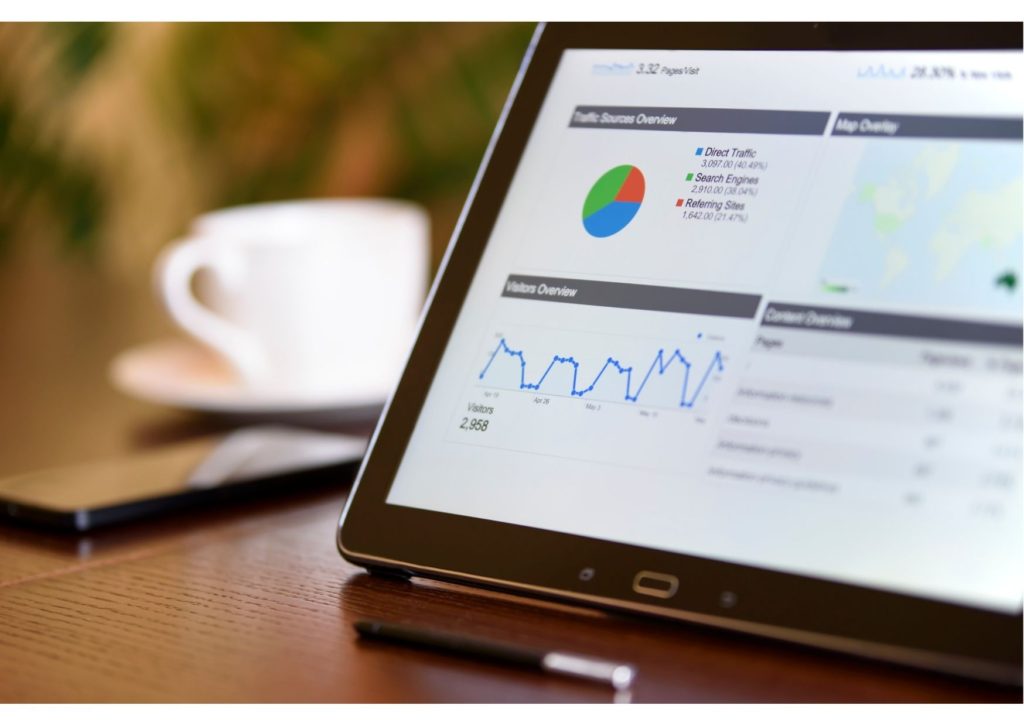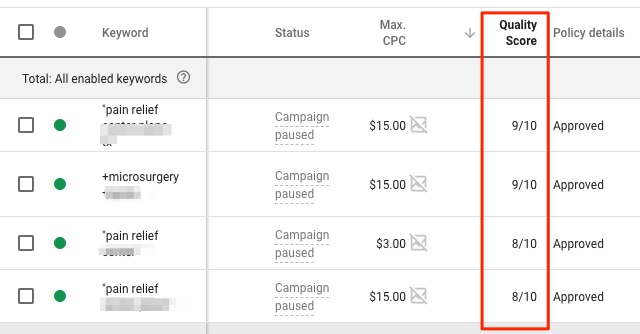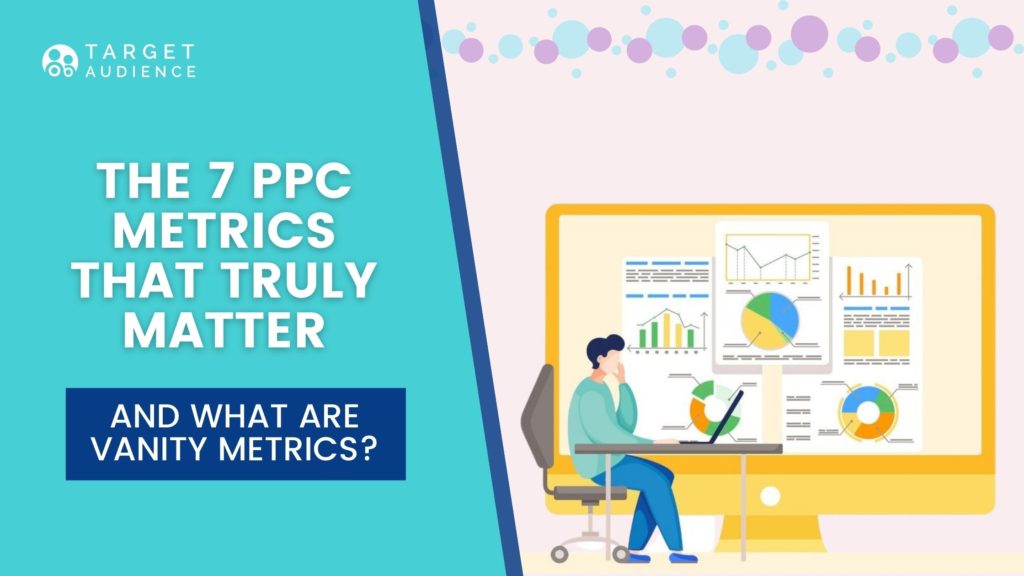If you have ever managed a PPC campaign, you know that there is a massive amount of metrics to navigate and data to go through. PPC is driven by data, but not all data is equal.
While one of the best things about PPC as a practice is its measurability, it can be difficult to tell which metrics you should focus on to actually make your campaign more profitable. So what makes a PPC metric valuable?
Of course, every campaign will have slightly different goals and therefore the most important KPIs will differ. But in short, the valuable PPC metrics are the ones that directly reflect when your business makes money. At the end of the day, the bottom line goal of every campaign is to bring tangible results, in the form of paying customers.
It’s hard to separate PPC advertising from Google, so naturally many of the metrics we discuss have to do with search marketing. Your PPC efforts should ultimately help you rank higher on the SERPs, and your metrics should reflect that.
Below we listed the 7 most important metrics for streaming the success of a PPC campaign, and how to tell them apart from so-called vanity metrics. Let’s get into it!
1. ROI/ROAS
Return on Investment (ROI) is one of the most straightforward yet most important metrics to track on Google Ads. Are you bringing in more money than you’re spending? In the simplest terms, ROI is calculated by dividing the total revenue you’ve received as a result of your PPC campaign by the cost of your ad spend. If your ROI is in the negatives, your campaign needs to be reviewed and optimized. All things considered, this bottom line should be your first priority.
ROI and Return on Ad Spend (ROAS) are sometimes used interchangeably, but this isn’t technically correct. ROI takes a macro approach, bringing things like tools, salary, and other expenses into consideration. ROAS focuses on your actual digital campaigns on a micro level and tells you if your campaign was profitable on the basis of ad spend alone.
2. Cost Per Click (CPC)
Cost Per Click (CPC) refers to the actual price you pay for each click in your marketing campaign. CPCs are based on the competitiveness of the keywords that you’re using. If you notice that your CPC increases, consider using longer-tail keywords to attract more targeted traffic, or raising your maximum bids to stay competitive for your most important keywords.
CPC is the metric to look at when you form your budget. Calculate your average click cost, conversion rate, and monthly sales goal (clicks x conversion rate = sales).

3. Cost Per Acquisition (CPA)
Cost Per Acquisition (CPA) is the aggregate cost of taking an action that leads to a conversion, or more specifically, a sale. While CPC is designed to drive traffic to a web page, CPA allows you to determine the specific action you want to measure, the direct sale converted by a particular campaign.
CPA is an essential metric to track because it’s ideal for determining actual return on investment. Moreover, it allows you to control your advertising costs because you’re only charged for the ad when a chosen action is completed.
To calculate your campaign’s CPA, divide your total advertising cost by the number of acquisitions (Total campaign cost / Number of sales conversions = CPA). The average CPA can vary widely across industries, so there isn’t really a standard to shoot for. For example, if you spent $100 on clicks, and got two sales, your CPA would be 50$. That would be a high CPA if you’re selling planners (where the average order might be $20 max), but a low CPA if you’re selling home security systems (where an average order might be $1000 or more).
That being said, there are some ways to reduce your CPA:
- Use Negative keywords – Adding negative keyword groups to your campaign will ensure your ad only runs against relevant queries and increase the proportion of high-quality, relevant users that click on your ad.
- Lower keyword bids – Run a Google Experiment on your keywords to see how ad rank impacts your click-through and conversion rates. Adjust your keywords based on the result, and drop keyword bids that don’t generate successful results.
4. Conversion Volume
Conversion volume is essentially the number of users who convert during a certain period. A lack of growth in your conversion volume is a red flag. It basically means something isn’t working and your campaign needs some serious adjusting.
If you can grow your conversion volume while maintaining your CPA, it means you are generating more revenue from less spend. The ultimate win.
5. Close Rate
Close Rate is a phrase that comes from sales but can be applied to digital marketing. Not every conversion ends in a completed transaction, some conversions are merely opportunities. To get a real picture of how your campaign is doing, you need to factor your effective close rate into your CPA.
This is not to say conversion rates aren’t important. Conversion is the first step, but it still doesn’t make that lead a paying customer. Making a distinction between conversion rates and close rates can help you identify the problematic parts of your customer’s journey.
If your close rate is considerably lower than your conversion rate, it might mean the internal transition from acquisition to sales needs improvement or that you aren’t reaching qualified leads.

6. Quality Score
Unlike the rest of the metrics we listed so far, the quality score doesn’t have a direct correlation with a better return. However, a high quality score can save you money and increase quality traffic throughout your ads and pages. Google has been known to keep an air of mystery around the algorithm behind quality scores, but it generally depends on the following factors:
- The quality of your landing pages.
- The relevance of your keyword to your ad text and the user’s search.
- The past CTR of your keyword and of your overall account.
Each of these factors can be analyzed and improved. Tactics like geographic specificity can help with your quality score too. The better the quality score your ad and landing page generate, the more Google will reward you.
A high quality score can earn you lower CPC and better ad placements on the search engine. In some cases, it will allow you to jump a competitor’s ad even if that competitor has a higher bid. In other words, a quality score is what Google uses to make sure that the highest ad positions don’t automatically go to whoever shells out the most cash.

There are a few ways to increase your quality score:
- Create well-organized ad groups.
- Use plenty of relevant keywords on your landing pages.
- Use the keywords in the ad copy.
- Utilize calls to actions and convey a very clear value proposition.
7. Total Conversion Value
Total conversion value is crucial when you want to compare between campaigns, ad groups, and even individual keywords. You might find that users who are looking for a particular product tend to spend more.
For example, a customer walking into a garage shop looking for a new battery is likely to just buy the battery and leave. On the other hand, a customer looking for new headlights is likely to want to upgrade other features like mirrors and tires at the same time. So although the batteries and the headlights may cost around the same amount, the total conversion value of the headlights will be higher.
The total conversion value of a product lets you know which items are better to promote. If you are considering a retargeting strategy, this is a very helpful metric to look at.
What Are Vanity Metrics?
When we talk about vanity metrics in PPC, we don’t mean to say that these metrics don’t hold any value. But they don’t have a direct influence on your revenue, therefore they don’t provide tangible results for your business.
1. Impression based metrics
Impressions are the number of times your ad appeared to people searching for the target keyword in your campaign. Impression-based metrics include clicks, click share, visits, impression share, and Cost Per Thousand Impressions (CPM).
Tracking the total number of impressions is important if your PPC campaign’s sole objective is to raise brand awareness and maximize reach.
Of course, traffic is necessary and while increasing impressions might eventually turn into more leads, views alone shouldn’t be your goal because they don’t make you any money. You need to make sure those clicks are translating into conversions.

2. Engagement based metrics
Engagement-based metrics include click-through rates, micro conversions, comments, followers, likes, shares, and more. We’ve already said it and we’ll say it again – just because we’ve included it in the vanity metrics list, doesn’t mean we don’t think engagement is not important. If no one is clicking on your ad to get to your landing page, there is a problem. But just like traffic, engagement-based metrics alone aren’t worthwhile if they don’t lead to conversions.
As KlienBoost states, relative CTR is more useful for understanding your campaign’s challenges than overall clicks. Instead of focusing on an ad’s CTR data on Google Analytics, examine the relative CTR to other ads of the same type.
3. On-site metrics
Metrics such as visitors, new users, bounce rates, and time on site are also sometimes referred to as behavior-based metrics. The fact that a user has spent a long time on your landing page doesn’t mean much if they left without taking action.
Instead of sweating over the Visitors Overview report on GA, you’d be better off customizing a report view that tracks outcomes based on your personal business goals.
Final Thoughts
To sum up we need to go right back to the beginning. The most important PPC metrics are the ones that have a direct influence on revenue. The 7 metrics we listed above will give you a clear picture of how your campaign is performing and which parts require optimization.
Vanity metrics such as impressions, click-through rates, and on-site behavior have their own value, they can’t bring any tangible results on their own. They should be viewed as important pieces in the puzzle, but not goals in and of their own.
Keeping this in mind should make choosing which metrics to focus on much easier in your next campaign.



